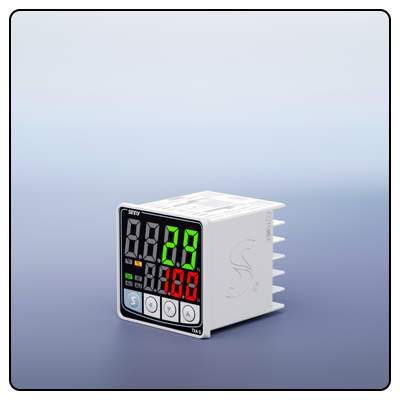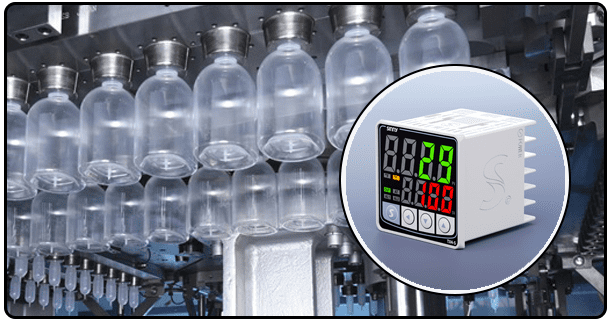Temperature Controllers: Enhancing Precision and Consistency
Gain insight into how temperature controllers enhance precision and consistency across industries by exploring their types, applications, and future trends for temperature regulation.
1. Introduction
Temperature controllers play an essential role across various industries, as they ensure processes run with maximum precision and consistency. Temperature controllers play a part in maintaining product quality, safety, and energy efficiency; in this article we explore various types of temperature controllers available as well as their uses as well as technological developments which boost their effectiveness.
2. Understanding Temperature Controllers
Definition and Functionality
Temperature controllers are devices designed to ensure an ideal temperature within an agreed-upon range, via sensor input compared to their set point temperature. When there is any variance from that set point temperature, however, heating or cooling elements will activate as necessary in order to correct it and keep temperatures within their target parameters. This ensures an even, stable environment at all times.
Types of Temperature Controllers
* On/Off Controllers (also called On/Off Switches or Simple Controllers): These simple temperature regulators act by activating or deactivating when temperature reaches set point; although easy to use, this type can result in fluctuations close to setpoint temperature levels.
*Proportional Controllers:These controllers feature variable output that reflects any differences between set point temperature and actual temperature, providing more stable control by decreasing temperature fluctuations and providing variable output proportional to them. This helps minimize fluctuations and stabilize control more easily.
* PID Controllers: PID (Proportional-Integral-Derivative) controllers combine proportional, integral and derivative control actions in order to provide precise temperature regulation by continuously adjusting output in order to decrease variance between temperature set points and actual temperatures. They achieve this through continuously adjusting their output in order to minimize deviation between actual temperatures and setpoint temperatures.
Applications
Temperature controllers find numerous applications across industrial processes like manufacturing and food processing as well as commercial systems like HVAC (Heating, Ventilation and Air Conditioning). Temperature controllers ensure processes such as molding, extrusion and curing take place at their optimal temperatures; in food processing they help ensure cooking, pasteurizing, refrigeration are maintained at consistent levels.
3. Enhancing precision in temperature regulation.
Technological Advancements
Modern temperature controllers feature advanced sensors with increased accuracy and reliability that detect even minor variations in temperature for precise control. IoT (Internet of Things) technology further boosts this precision by enabling real-time monitoring and adjustment ensuring temperatures always remain within their target ranges.
Calibration and Maintenance
Temperature controllers must be calibrated regularly in order to remain accurate, with calibration meaning comparing readings against an established standard and making any necessary adjustments. Regular maintenance practices - like cleaning sensors or checking connections - also help in upholding precision of these devices, guaranteeing they function according to specifications, thus eliminating deviations in temperature control.
4. Ensuring Consistency in Temperature Control
System Design and Configuration
Designing temperature control systems with optimal performance in mind is integral for maintaining consistent temperatures across an HVAC system, such as an HVAC temperature controller which must accommodate factors like airflow, humidity levels and external temperature variations. Careful system design and configuration help maintain consistent temperatures regardless of external influences such as external influences.
Environmental Factors
External factors, including ambient temperature and humidity levels can have an influence on temperature control. Implementing strategies to combat such influences are vital in order to keep consistent temperature levels. Insulation may help mitigate external temperature variations while dehumidifiers/air purifiers provide another method for maintaining consistent levels by controlling humidity/quality air levels.
5. Case Studies and Examples
Industry-Specific Examples
Precise temperature regulation is vital to product quality and safety within the food processing industry, particularly dairy processing plants that employ temperature controllers for pasteurization processes to prevent bacteria growth while assuring product integrity and product safety. Furthermore, temperature controllers play an essential role in keeping drug storage temperatures ideal while manufacturing takes place ensuring products that remain effective yet safe to use for consumers.
Expert Insights
Industry Expert Insights Experts emphasize the value of using advanced temperature controllers in order to attain both precision and consistency when setting temperatures, with regular maintenance and calibration being key components to maintaining performance of such devices. Furthermore, IoT technology has revolutionized temperature regulation through real-time monitoring and adjustments capabilities that facilitate real-time control of settings.
6. Future Trends in Temperature Control
Emerging Technologies
Artificial Intelligence and machine learning will play an increasingly integral part of temperature control technology. AI-enabled temperature controllers can predict temperature fluctuations and adjust controls proactively, increasing precision and consistency over time. AI can learn from past data to optimize performance at all times ensuring optimal results at every moment of operation.
Sustainability
Eco-friendly temperature control solutions have gained in popularity recently, such as energy-efficient controllers and systems designed to minimize their environmental footprint while offering optimal performance. Some temperature controllers even reduce energy use by optimizing heating/cooling cycles - providing another sustainable approach that not only saves on costs but contributes towards environmental preservation as a whole.
7. Conclusion
Temperature controllers have become an integral component in various industries, helping ensure processes run efficiently and reliably. Thanks to advances in technology, temperature controllers are becoming ever more accurate and reliable - providing for more sustainable temperature regulation that ensures peak performance with regular calibration/maintenance/adopting new technologies as the only path towards successful temperature regulation.
- Temperature Controllers in Industries: A Comprehensive Overview
- Top 20 Temperature Controller Manufacturers of 2024























